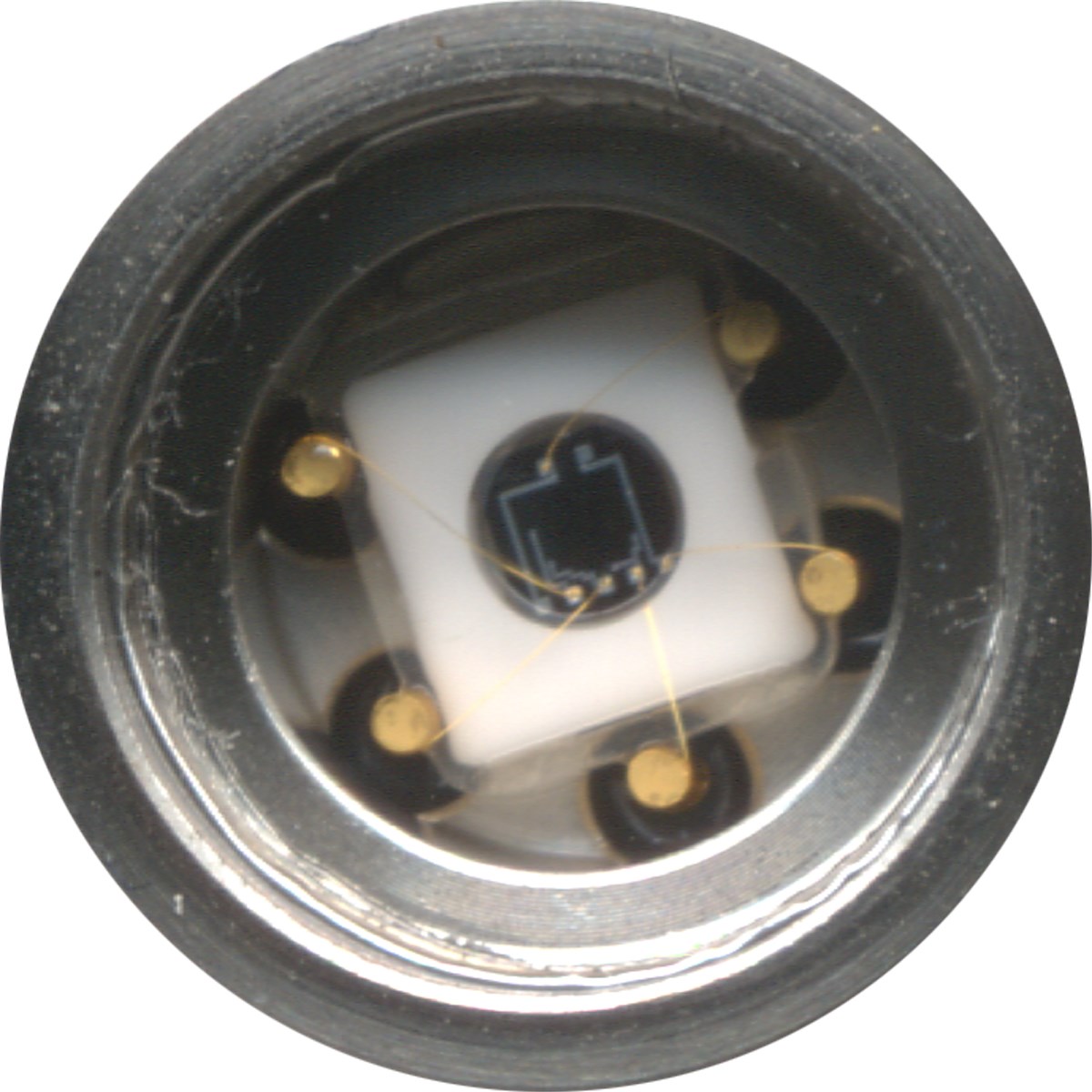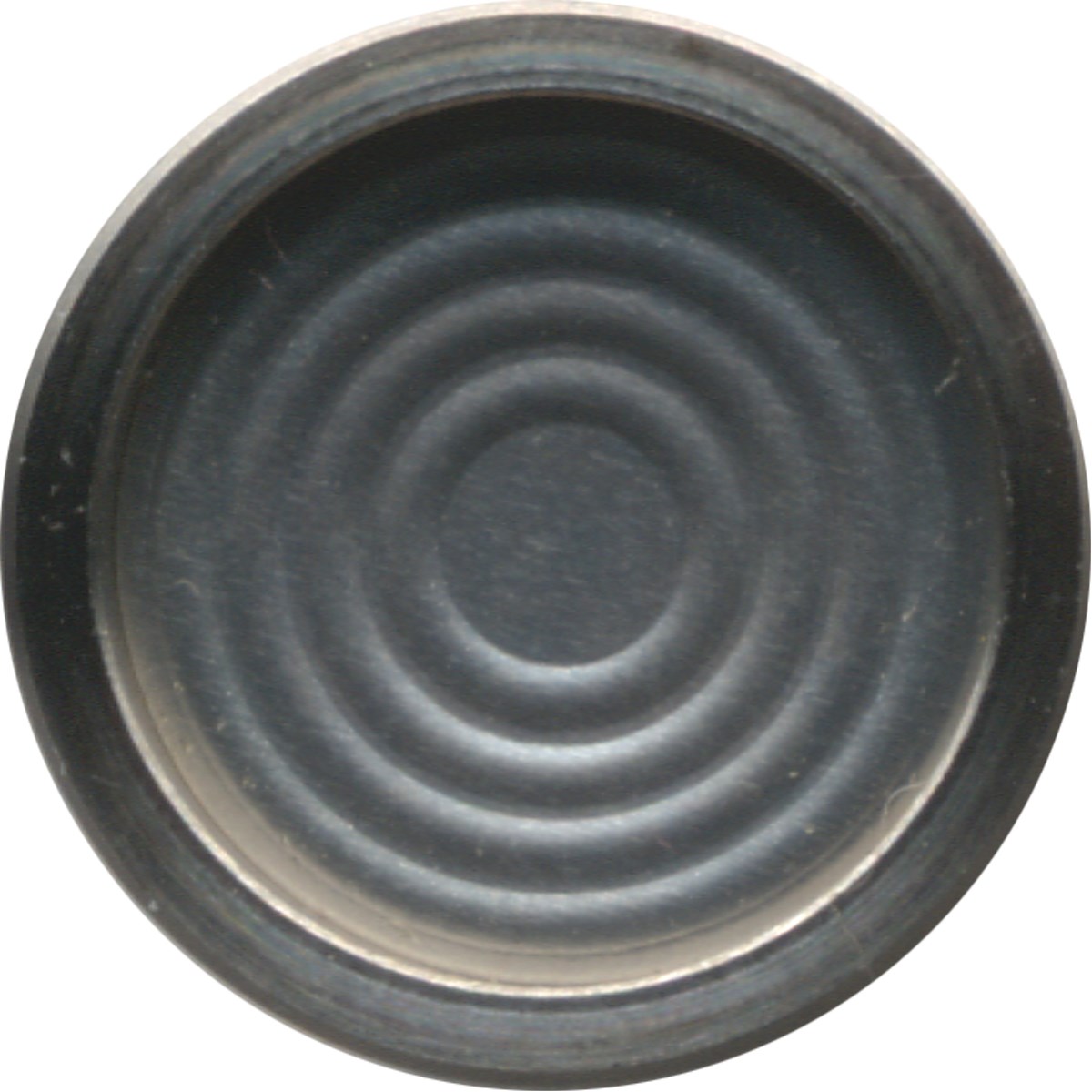Effects of Mechanical Shock on Pressure Sensors
Quick Summary: Calscan pressures sensors are rugged, and properly treated and serviced they can last for years. One of the main reasons they do fail is from mechanical shock caused by impact or vibration.
Below are magnified views of inside the sensor, and of the diaphragm face on our typical pressure sensors. The sensing element is very small and is attached to five gold colored glass feed throughs that provide the electrical connection. Each feed through has a hair sized gold wire that connects to the actual sensing element in the middle of the sensor. You can see the sensing element below left surrounded by a square piece of ceramic.


Vibration and shock can disconnect the gold wire from the sensing element, or damage the sensing element itself, destroying the transducer. The diaphragm on the right is actually the thickness of aluminum foil. Damage from chemical or mechanical impact can change the calibration, or permanently destroy the sensor.
From our years of practical experience, the sensing element is most susceptible from side shock and vibration. As an example, Calscan downhole tools' pressure sensors do not typically fail due to the vertical shock of a tool being dropped.
Operating Procedures to Avoid
Mole, Badger and Wolverine Downhole Gauges
- Running a downhole gauge too fast up or down a well. This tends to slap the gauge back and forth in the well casing/tubing. These side impacts have a much greater chance of damaging the gauge than impacts from the bottom.
- If the springs in a bombwell are to loose, the tool can start to oscillate inside. This vibration can lead to sensor failure. It is normally better to not use bombwells at all, especially since Calscan gauges are made of 718 Inconel, which is much more resistant to chemical attacks than the typical 316L stainless bombwell.
- When cleaning the diaphragm make sure to use a soft brush such as a paintbrush. Screwdrivers and metal bristles can scratch or dent the diaphragm, ruining the accuracy of the sensor.
Hawk Surface Gauges
- Water freezing on the face of the sensor. Use a methanol injection system to prevent the water freezing if the weather makes this a possibility.
- Isolate the pressure lines if pressure spikes are expected, for example when fracking a well
- Working on a wellhead when one of the pressure sensors is directly screwed into the wellhead. The vibration or impact from typical tools such as a hammer or other well servicing procedures can damage the sensor. If the pressure must be monitored it should be attached via tubing or high pressure rubber lines, this will help isolate any mechanical vibration damaging the sensor.
